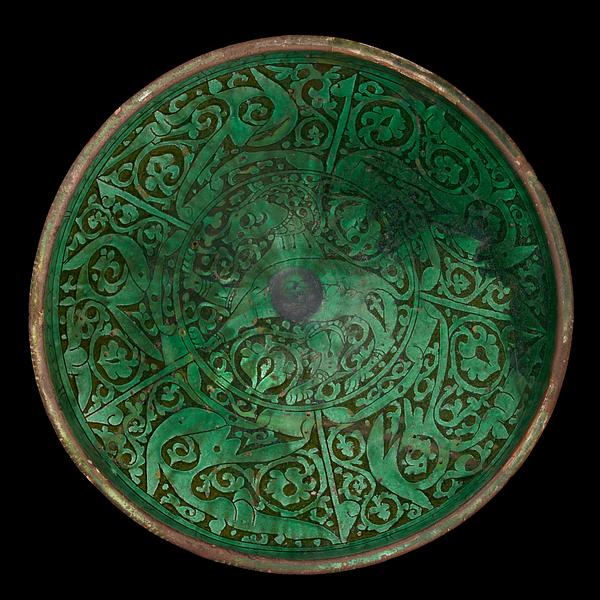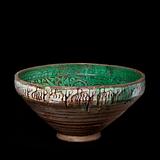Earthenware bowl, with carved decoration in a white slip under a green glaze. Garrus type
Northwestern Iran; 12th-13th century
H: 21; Diam: 41.5 cm
The sgraffito technique, in which a pattern is carved through a light slip, revealing the darker color of the underlying clay, was known in Iraq and Iran from the 9th century.
A variant of this type – using the champlevé technique – was developed in the district of Garrus, southwest of the Caspian Sea, in the 12th century. Larger areas of the slip were scraped away, and when they were filled with glaze, the recesses frequently served as the background for the main motif, often an animal. The type was quite popular, and a number of the more imaginative patterns have since been found to be forgeries.
Inv. no. 1/1967
Published in:
Henri Rivière: La ceramique dans l'art musulman, Paris 1913, pl. 25;
Catalogue of the International exhibition of Persian art at the Royal Academy of Arts, 3. ed., Royal Academy of Arts, London 1931, p. 74, cat.no. 114J;
Arthur Upham Pope and Phyllis Ackerman (eds.): A survey of Persian art: from prehistoric times to the present, London 1938-39, vol. 5, pl. 614;
André Leth: Davids Samling. Islamisk kunst = The David Collection. Islamic Art, København 1975, p. 25;
Kjeld von Folsach: Islamic art. The David Collection, Copenhagen 1990, cat.no.79;
Kjeld von Folsach: Art from the World of Islam in The David Collection, Copenhagen 2001, cat.no. 126;
Anne-Marie Keblow Bernsted: Early Islamic pottery: materials and techniques, London 2003, fig. 26, p. 23;


